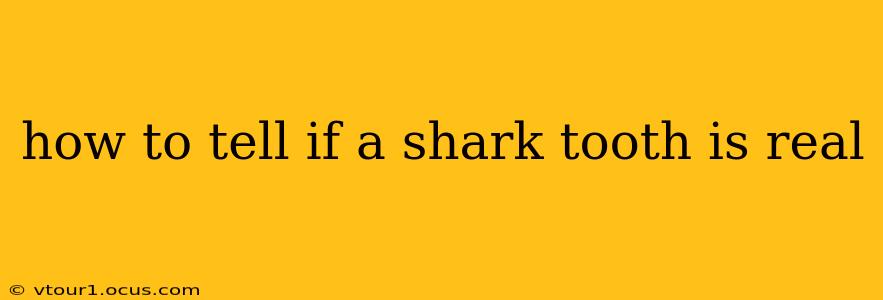Finding a shark tooth is an exciting experience, whether you're a seasoned fossil hunter or a beachcomber on a leisurely stroll. But how can you be sure your treasure is the real deal and not a cleverly crafted imitation? This guide will equip you with the knowledge to distinguish genuine shark teeth from cleverly made fakes.
What Makes a Real Shark Tooth Unique?
Real shark teeth possess a unique combination of characteristics that differentiate them from replicas. Understanding these features is key to accurate identification. Let's delve into the essential aspects:
1. Texture and Weight:
Genuine shark teeth have a distinct texture. They often feel slightly rough, even gritty, to the touch, reflecting the tooth's natural enamel and age. Replicas, often made from plastic or resin, typically have a smoother, more uniform surface. Furthermore, real teeth possess a satisfying heft – they feel heavier than you might anticipate for their size. A fake might feel surprisingly light.
2. Color and Patina:
The color of a genuine shark tooth can vary widely depending on the species, age, and the minerals it has absorbed over time. Many will show a natural patina, a surface discoloration or film, that indicates age and exposure to the elements. Artificial teeth usually exhibit a uniform, often too-bright or unnatural coloration. Look for subtle variations in color across the tooth's surface.
3. Sharpness and Wear:
While fossilized teeth will show signs of wear and tear, the edges of genuine teeth generally retain a degree of sharpness, especially on the more recently unearthed specimens. Replicas often have unnaturally sharp, uniform edges that look almost too perfect. Examine the serrations (if present) closely. On real teeth, these will be slightly irregular and show variations in size and spacing. Fake teeth might have perfectly aligned, uniform serrations.
4. Root Structure:
The root structure is a critical aspect for authentication. Real shark teeth have a distinct root structure, often showing subtle variations in shape and size. Many replicas lack this detail or exhibit overly simplified, unrealistic root formations. If the tooth is complete, examine the root closely. It should display natural intricacies rather than a uniform, artificial look.
5. Mineralization (for Fossils):
For fossilized shark teeth, mineralization is a key indicator of authenticity. This process, where minerals replace the original tooth material over time, can result in a heavier weight and increased hardness. It's often accompanied by a subtle alteration in color and texture. Fake fossils will not display these natural mineralization characteristics.
H2: How can you tell the difference between a fossil shark tooth and a modern shark tooth?
Fossil shark teeth, unearthed from ancient sediments, differ from modern teeth in several key ways. Fossil teeth exhibit a distinct discoloration and often possess a heavier, more mineralized structure. They might show signs of significant wear or damage from age and burial. Modern shark teeth, on the other hand, will possess a brighter, clearer color and a less mineralized structure. They might exhibit minimal to moderate wear depending on the shark's age and diet.
H2: Where can I find real shark teeth?
Reputable fossil dealers and museums are excellent places to purchase authentic shark teeth. Online marketplaces can also be a source, but exercise extreme caution; always verify the seller's credentials and request detailed images of the tooth to ensure its authenticity. Geological digs and beaches in areas known for shark tooth deposits are good places to look for them yourself.
H2: Are there any tests I can do to verify a shark tooth's authenticity?
While there are no foolproof home tests, carefully examining the tooth for the characteristics described above is the most effective approach. If you're unsure, consulting with a paleontologist or geologist can provide expert confirmation.
By carefully examining these features, you can significantly increase your chances of identifying a genuine shark tooth and appreciating the unique story it holds. Remember, patience and careful observation are key to discerning authenticity.
